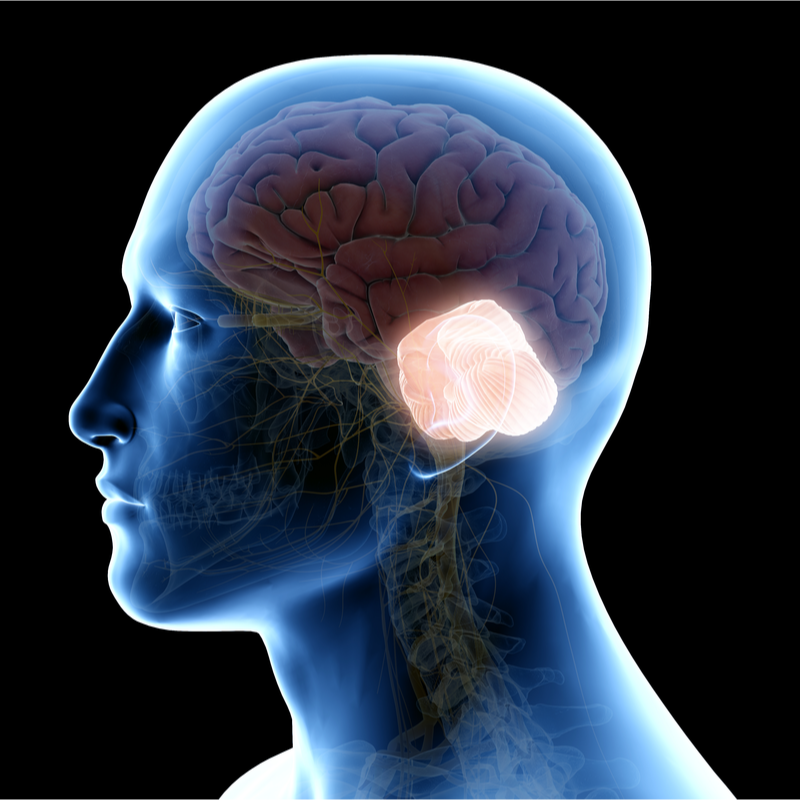
What is arachnoid sarcoma of the cerebellum?
An arachnoid sarcoma of the cerebellum manifests as sharply circumscribed, nodular, whitish, friable lesions. The disease can develop on both the dorsal and lateral sides of the right cerebellar hemisphere. If the arachnoid sarcoma develops in the left cerebellar hemisphere, it is usually found near the vermis. An arachnoid sarcoma of the cerebellum arises from the so-called spider webs (arachnoidea), one of a total of three webs that extend from the brain to the spinal cord. The arachnoids are located between the outermost meninges that surround the central nervous system (dura mater) and the soft meninges (pia mater). Their task is to seal the cerebrospinal fluid space watertight.
Some doctors believe that arachnoid sarcoma of the cerebellum is a very rare malignant variant of the meningiomas. According to the classification of the World Health Organisation (WHO), arachnoid sarcoma of the cerebellum would make up the third tumour grade, which occurs in only two to three percent of all cases. They are not only malignant, but also show a rapid growth behaviour. An arachnoid sarcoma of the cerebellum develops with above-average frequency at a younger age, around 20 years of age.
What can cause arachnoid sarcoma of the cerebellum to develop?
An arachnoid sarcoma of the cerebellum forms due to an excessive growth of the cobwebs (arachnoid membranes). Doctors are not yet in agreement about which factors can trigger this growth . However, they assume the following two risk factors :
- Radiotherapy of the brain, which may have been carried out because of a previous cancer.
- The presence of the hereditary disease neurofibromatosis type 2 or morbus Recklinghausen can also increase the risk of the disease.
What are the symptoms of arachnoid sarcoma of the cerebellum?
A arachnoid sarcoma of the cerebellum initially manifests itself as headaches that last for more than months, which can also increase in intensity over time. Many patients felt an increase in the headache when turning the head or performing movements, which decreased when lying down. Other patients complained that they could not sleep at night because of the headache. In addition to this rather unspecific symptom, the following other complaints can also occur:
- Coordination problems of the hand (mostly on the right), making fine motor movements impossible,
- Sensory disturbances, such as numbness, especially in the extremities,
- Nausea and/or vomiting,
- Decrease in visual acuity,
- Perception of double images,
- Dizziness
How is arachnoid sarcoma of the cerebellum diagnosed?
An arachnoid sarcoma can be diagnosed by the usual imaging methods of a computer (CT) or magnetic resonance imaging (MRI) . Arachnoidal sarcoma of the cerebellum is characterised by its special microscopic architecture. As light to round, relatively cell-free islands, they are free of so-called reticulin bundles and are surrounded by a dark-looking "stroma", through which blood vessels run. A blood flow measurement of the brain can support the diagnosis of arachnoid sarcoma of the cerebellum.
If there is an additional diagnostic need, an X-ray of the blood vessels of the head (angiography) can also be performed. In this way the vessels that supply the tumour and/or are displaced by it can be identified. The findings of an angiography can also be useful for a subsequent operation.
How is arachnoid sarcoma of the cerebellum treated?
The first choice of treatment is always surgery. However, if the tumour can be surgically removed due to its proximity to critical structures such as the brainstem, optic nerves and/or temporal lobes , the following further treatments can be performed:
- Radiotherapy: However, this therapy can rarely destroy the tumour due to its insufficient dosage.
- Proton therapy: This form of therapy has the advantage over radiation therapy that the tumour can be irradiated with a higher dose without affecting the surrounding tissue.
Since
pain can also occur due to the disease, especially headaches
, an essential part of the therapy is the
so-called pain therapy.
Neurological complaints can be alleviated, for example, through individual pain management, a healthy
lifestyle, but also through physiotherapy. To
strengthen the immune system, vitamin C can also be administered in high doses
. In addition, patients should pay attention to regular
exercise and a healthy diet.
What is the course of the disease in arachnoid sarcoma of the cerebellum?
A arachnoid sarcoma of the cerebellum often manifests itself as headache, which in most cases starts in the back of the head and lasts for about three months. This is usually followed by coordination problems. If you notice these signs, it is advisable to have them clarified by a specialist . It is not uncommon for some patients to develop metastases in the spinal column. Usually surgical removal of the tumour is attempted, followed by radiotherapy.
What is the prognosis for arachnoid sarcoma of the cerebellum?
An arachnoid sarcoma of the cerebellum is potentially dangerous because metastases can form. The chances of cure are also rather poor . In almost 90 percent of all cases, people with arachnoid sarcoma of the cerebellum live for the first five years after diagnosis. The prognosis improves significantly if the tumour can be completely removed.
An arachnoid sarcoma of the cerebellum tends to form again after some time (recurrence) even after successful therapy. For patients it is therefore advisable to attend the regular check-ups in order to not only observe the further course of the disease, but also to diagnose a recurrence as early as possible.
